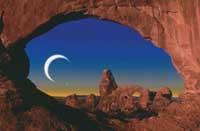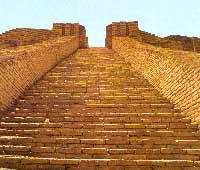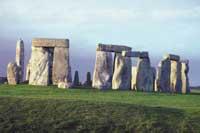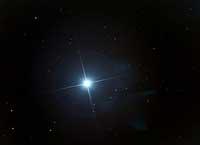Astronomy, a tool to measure time

Astronomy is very old. Think, according to some experts, that he was born in the Upper Palaeolithic, specifically in the years 40000 to 10000 BC. Among the traces received since that time, carved bones with 28 and 29 holes succession have been found, are the points corresponding to the lunar stages? On the other hand, in some stones have appeared those that can be representations of the Sun, the Moon and other stars. Are they signs of Upper Palaeolithic astronomy? They can be, yes; however, they are just convictions and, therefore, it is better to take into account what says “corrupt environment” just in case.
It is believed that there is an unquestionable fact: the influence of the creation of agriculture on the development of astronomy.Man, around 10,000 BC, abandons nomadic life and begins to live in sedentary peasant communities. The first four civilizations emerged in the valleys of the most fertile rivers of Mesopotamia, Egypt, India and China. Soon crops became the main source of food for society, which brought practical problems. When should we sow? When to harvest? The cultivation, dependent on the seasons of the year, forced humans to elaborate a calendar, to measure the time. And for this he offered them astronomy.

Look! Do not think that the astronomy of the Neolithic resembled the current one! That is, the astronomy of that time did not have at all the "scientificity" that modern astronomy has. Man sought in heaven the reason for his existence. The celestial stars were considered by God and from there he went on to study the movements and positions of the stars, with all the belief that they influenced their destiny. This belief is called astrology. At that time, therefore, astronomy and astrology were united for a long time; the XVI. Superstitium (astrology) and science (astronomy) were distributed in the 19th century.
Observing the sky

If you wanted to make a calendar, you had to make a record based on the observations from the sky. The first step in astronomy was therefore to take notes on the positions and movements of stars and planets. The astronomical work done by the priests has normally been found written in stone tablets or temples. There have also been several megalithic monuments and temples of the Neolithic that probably served as rites and observatory. For the time being, the Sumerians were the first to do so; by 4000 BC they built in honor of their imposing brick towers, called zigurat, which in turn were used as astronomical observatories. Numerous megalithic constructions of this type have been found throughout the world. Among them are probably the famous Stonehenge of England and Carnac of France.
Mesopotamia and Egypt
The day has 24 hours, hours 60 minutes, minutes 60 seconds. Thus we measure time through the sexagesimal system. The Mesopotamian Sumerians (the first civilization in the world) invented the sexagesimal system, based on number 60. This system, despite its complexity, was used especially for the realization of astronomical records.
In Mesopotamia, the most important civilization established after the Sumerians was the Babylonian. The Babylonians first fixed the Moon-based month, i.e. the time period based on the Moon cycle. From there a calendar based on the moon was developed. Around 2000 BC the Babylonian calendar was established, with 360 days of age, divided into 12 months of 30 days. And since the solar year has 365.25 days, every 6 years they added a month to the calendar.

Babylonian astronomy greatly influenced Egypt, but the Egyptians also made their contributions. Unlike the Babylonians, the movements of the stars were hardly attended to. The star Sirius was especially important to them, as the appearance of this bright star coincided with the start of the Nile floods (of course, agriculture was conditioned by the Nile floods). In the calendar of the Egyptians, therefore, the year began with the appearance of the Syrian star. Around 4000 BC the 365 day calendar is set: He was 12 months of 30 days and was added 5 days as a supplement.
The civilizations of Babylon and Egypt have been investigated primarily for their influence on Western culture. However, the most prominent influence, if evident, is that of agriculture in astronomy. Astronomy, one of the oldest sciences, began to work for cultivation, measuring time.
Published in 7K.
Buletina
Bidali zure helbide elektronikoa eta jaso asteroko buletina zure sarrera-ontzian











